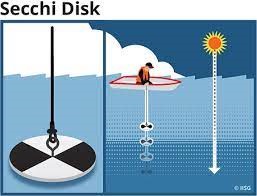Since 1979 the Vermont Lay Monitoring Program has trained and equipped dedicated volunteers to conduct periodic lake water quality sampling from their boats using quality-assured methods through strict protocol. Monitoring is carried out to better understand and assess the risks to ecological and human health. Vermont is required by the U.S. Clean Water Act to track long term nutrient enrichment and assess monitoring data.
Lay Monitors, sample the water in Echo Lake for water clarity, and concentration levels of Phosphorus (a nutrient), Chlorophyll-a (algae and cyanobacteria), and Caffeine (wastewater indicator).
Samples are taken every two weeks in June, July, and August at a predesignated GPS site, Echo #1, located near the deepest part of Echo. Additionally, the State of Vermont also conducts a sampling in the Spring. The State’s spring sample data dates from the inception in 1979, and Echo Lay Monitors began sampling in 1980. In addition to the water samples, we measure water quality by lowering a Secchi Disk recording the depths at which it disappears when viewed with the naked eye and when additionally viewed through a view tube. Next, we travel to Echo #2 located in the southeast corner near the Moulton farm and observe the Secchi Disk readings only.
Samples are then analyzed by the State to determine our level of Phosphorus, Chlorophyll, and Caffeine, and are generally available on their website by early winter. Phosphorous, a chemical compound, is a fertilizer that supports plant growth. The level of Chlorophyll indicates the concentration level of Algae, and plant growth in the lake. Caffeine has a strong correlation to levels of wastewater in the lake and can be an indicator of failed septic systems.
The three water samples and the Secchi Disk reading are a measurement of the health of Echo Lake. Echo Lake is designated an Oligotrophic lake. Oligotrophic lakes have very low nutrient concentrations, are deep, and support a cold-water fishery. Also, they are characterized by a small algae population and very clear water all summer and have a mostly rocky or sandy bottom and little plant growth. Oligotrophic lakes are our healthiest lakes.
The Vermont Lakes and Ponds Management and Protection Program (VLPP) devised a Score Card to share available data on overall lake health with lake users focusing on key aspects of lake health: nutrients, aquatic invasive species, shoreland and lake habitat, and mercury pollution. On the water quality tab of the Score Card you will notice that Echo’s Summer Phosphorus is categorized as HIGHLY SIGNIFICANTLY INCREASING. While we do not know why this trend is occurring, we do know that one way to help reverse this trend is to utilize best management practices on the shoreline to prevent erosion and runoff. The biggest source of phosphorus is sand and soil that is washed into a lake after a rain event. Therefore, property owners could help Echo’s water quality by adopting lake friendly practices and create a Lake Wise property.
For more information about Echo Lake’s Vermont Inland Lake Scorecard go to:
https://dec.vermont.gov/watershed/lakes-ponds/data-maps/scorecard
You can find more information about the Lay Monitoring Program :
https://dec.vermont.gov/watershed/lakes-ponds/monitor/lay-monitoring#What%20We%20Monitor%20and%20Why
You can find Echo Lake’s sampling data here:
